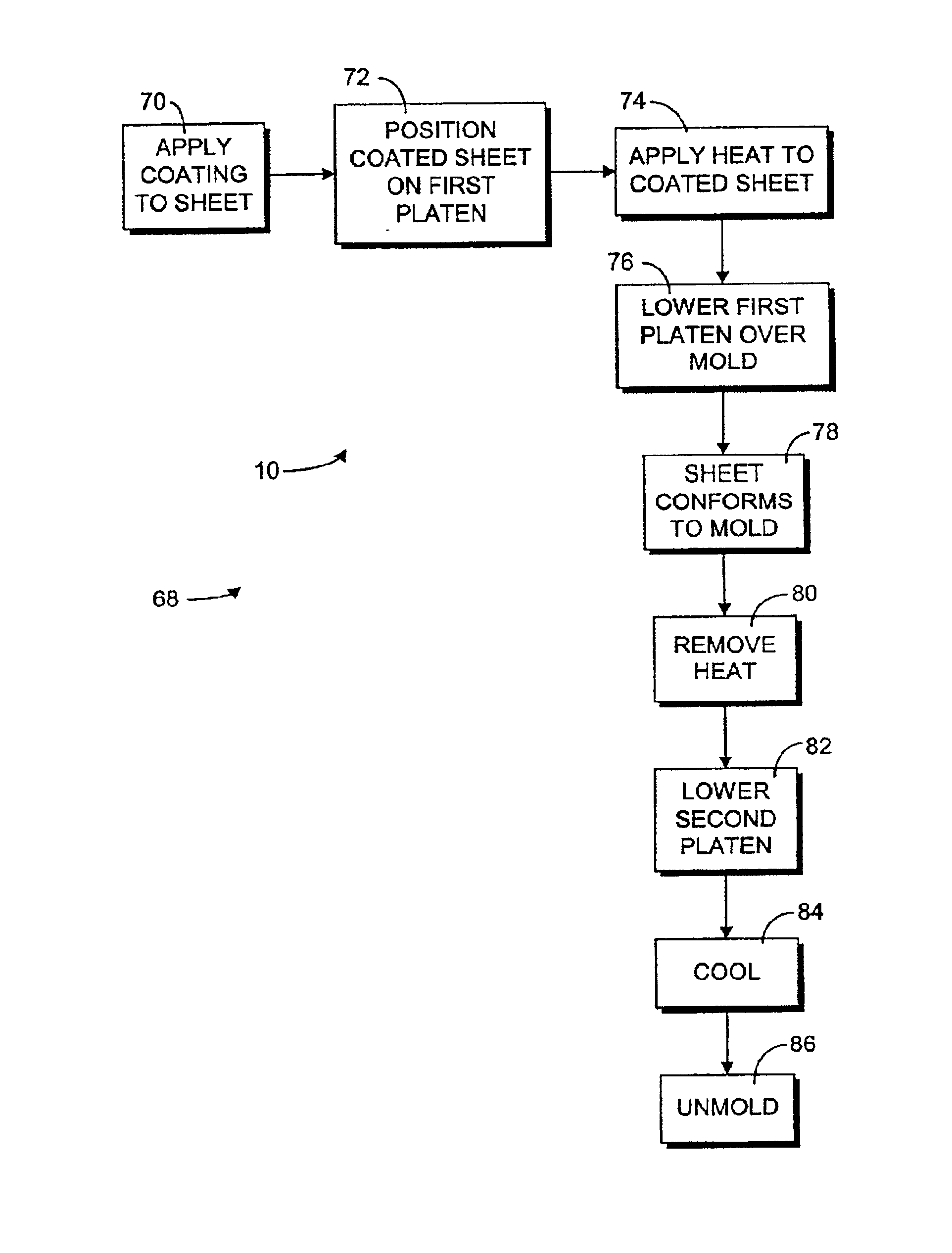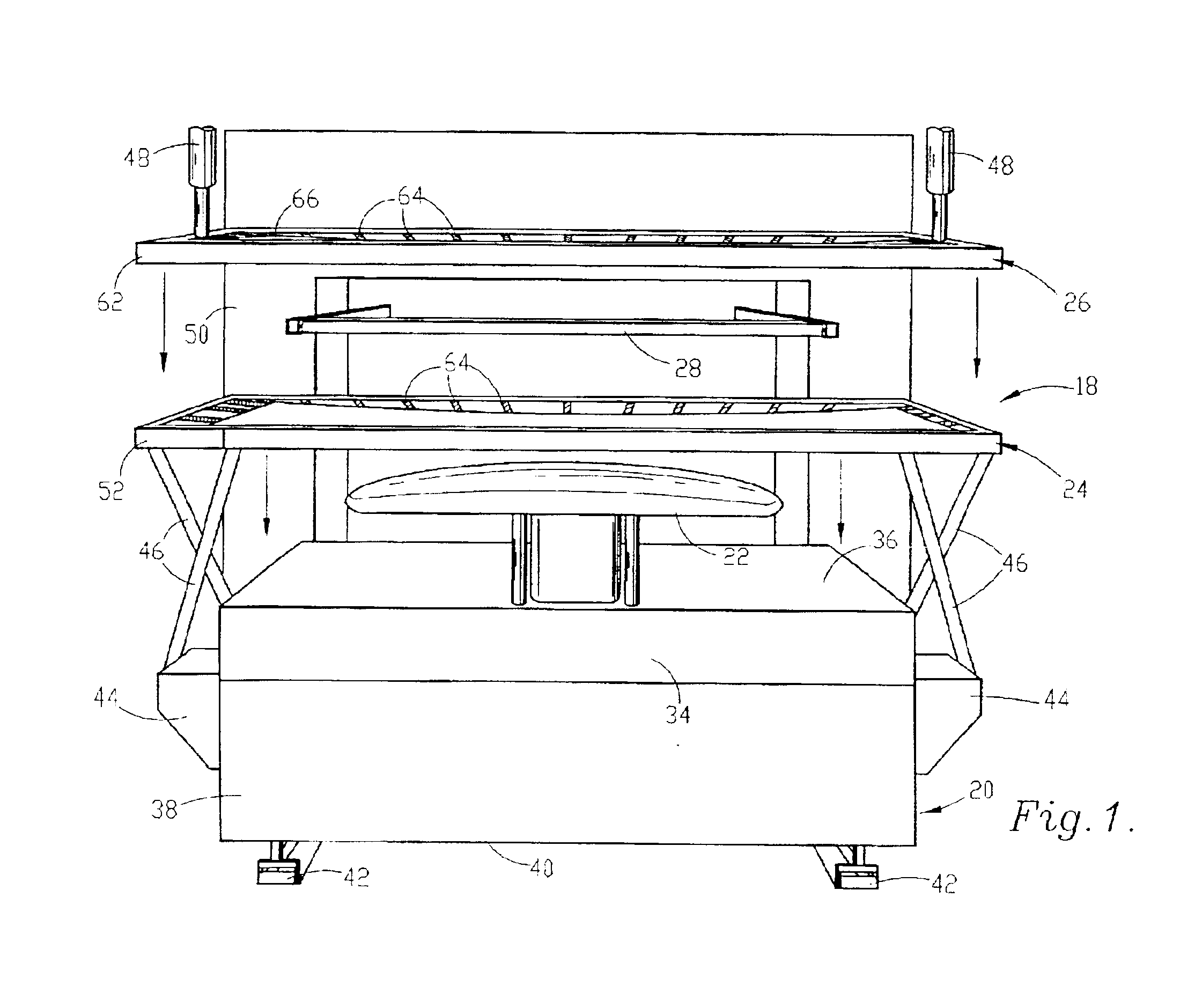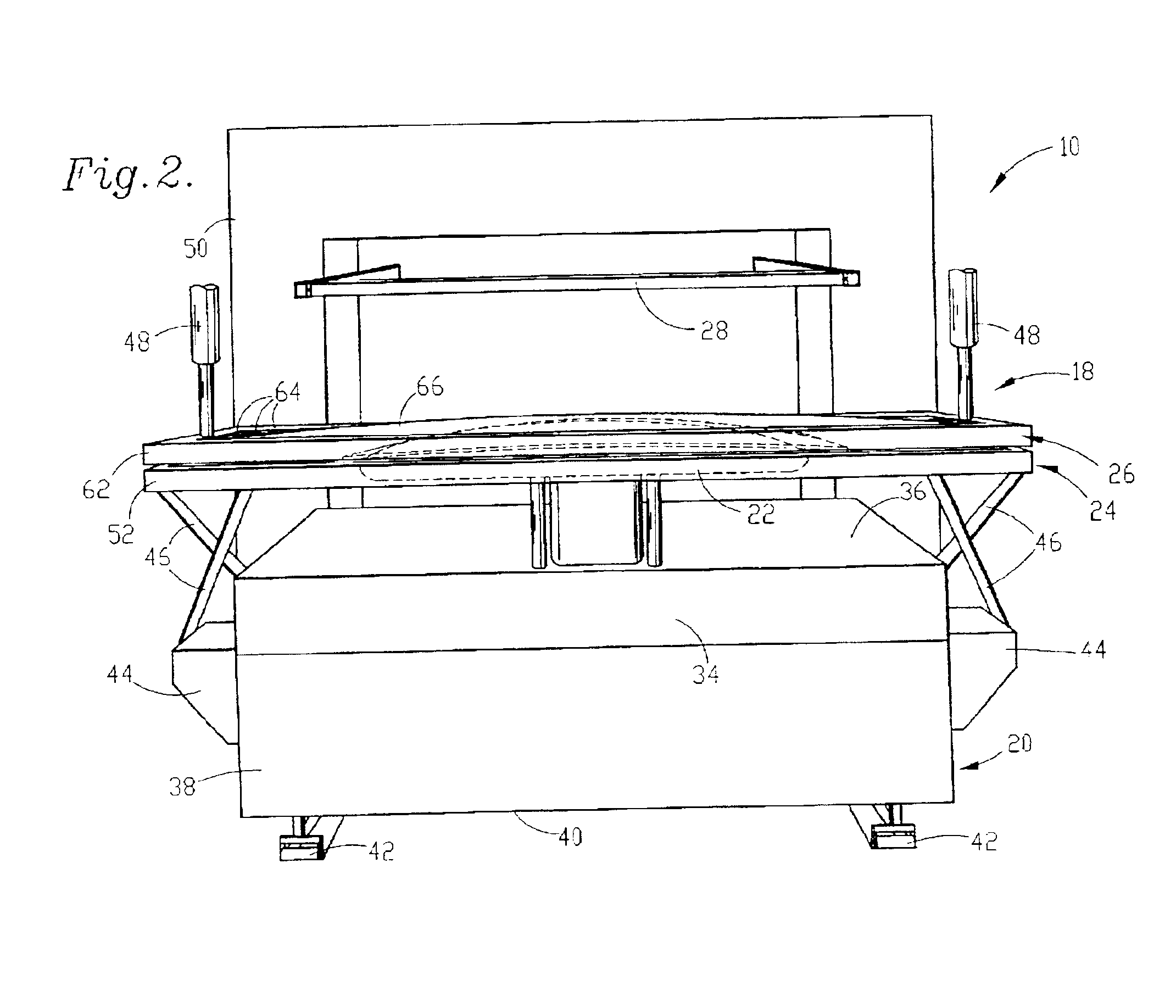Thermoforming process for masked polymers
a technology of masked polymer and thermoforming process, which is applied in the direction of chain saws, manufacturing tools, transportation and packaging, etc., can solve the problems of difficult removal of adhesive bonding agents, difficult application of masking, and difficulty in removing completely from the substrate surface of masking, etc., and achieves the effect of superior optical clarity and easy application
- Summary
- Abstract
- Description
- Claims
- Application Information
AI Technical Summary
Benefits of technology
Problems solved by technology
Method used
Image
Examples
Embodiment Construction
A polycarbonate sheet was subject to a thermoforming process according to the method of the invention to produce a curved automotive windshield free of surface marking, as follows:
A sheet 12 of 9030 grade polished Lexan .RTM. polycarbonate produced by General Electric Structural Products, Mt. Vernon, Indiana was employed as a substrate. Both surfaces of the polycarbonate sheet were factory laminated by General Electric with a 0.002 inch thick protective laminate 14 of sign grade adhesive-free polyethylene.
Black Pitt-Therm 97-724, a heat resistant silicone produced by PPG Architectural Finishes, was thinned 5.6:1 by weight with Varnish Makers and Painters Naptha (petroleum spirits) to produce a coating mixture. A 0.002 inch thick coating 16 was applied to both laminated surfaces of the polycarbonate sheet by spraying.
Thermoforming Equipment
A modified model 406XX PVI Thermoformer, produced by Plasti-Vac, Inc. of Charlotte N.C. was used. The machine included an infrared heat sou...
PUM
| Property | Measurement | Unit |
|---|---|---|
| temperatures | aaaaa | aaaaa |
| thickness | aaaaa | aaaaa |
| thickness | aaaaa | aaaaa |
Abstract
Description
Claims
Application Information
 Login to View More
Login to View More - R&D
- Intellectual Property
- Life Sciences
- Materials
- Tech Scout
- Unparalleled Data Quality
- Higher Quality Content
- 60% Fewer Hallucinations
Browse by: Latest US Patents, China's latest patents, Technical Efficacy Thesaurus, Application Domain, Technology Topic, Popular Technical Reports.
© 2025 PatSnap. All rights reserved.Legal|Privacy policy|Modern Slavery Act Transparency Statement|Sitemap|About US| Contact US: help@patsnap.com



